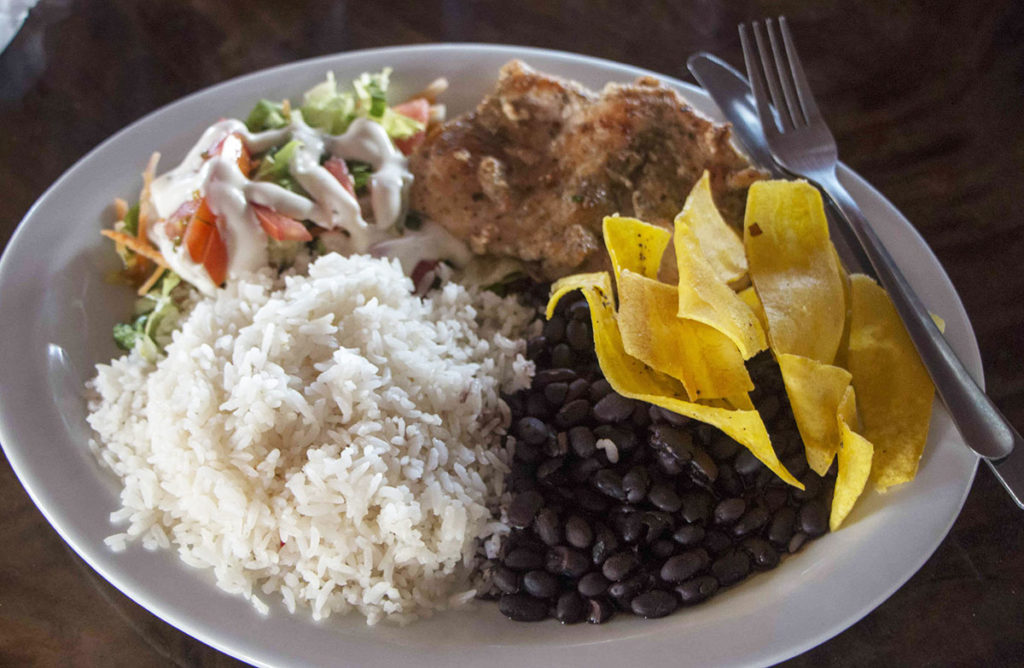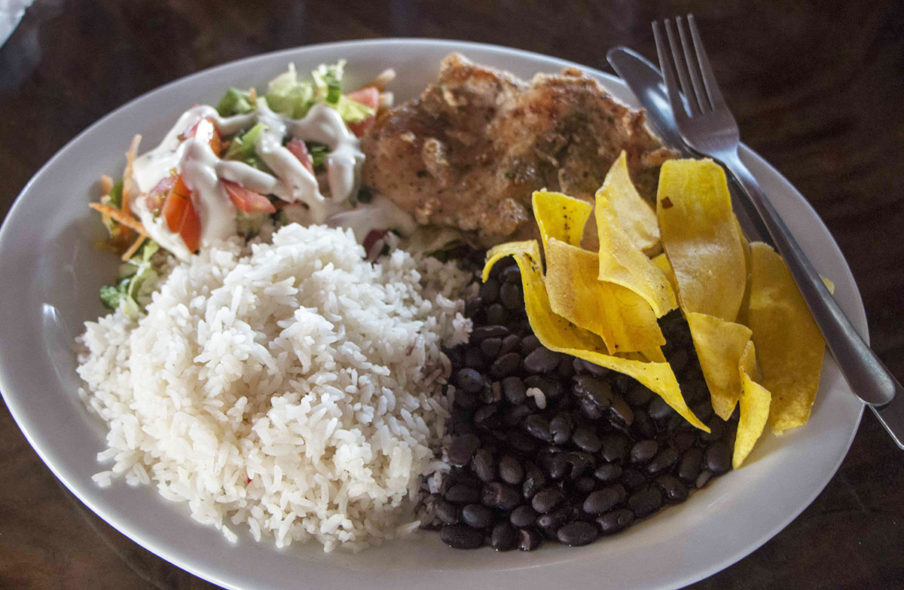
Costa Rica’s casado is more than food—it’s a plateful of culture, history, and heart. As someone who’s spent years exploring this country, I keep coming back to this national dish. Meaning “married” in Spanish, the casado blends rice, beans, plantains, salad, and protein into a balanced, flavorful meal that captures Costa Rica’s spirit. From San José’s bustling sodas to border towns near Nicaragua and Panama, let’s explore the casado’s origins, variations, and why it’s a cornerstone of pura vida.
Origins of the Casado
The casado’s story starts with humble roots, born to feed Costa Rica’s working class. Emerging in the early 20th century, it combined affordable, local ingredients to fuel farmers, builders, and factory workers. Its evolution into a national icon reflects the country’s knack for turning simplicity into something extraordinary.
Though its exact beginnings are murky, the casado likely took shape as a practical lunch for laborers. Rice, beans, and plantains—staples grown across Costa Rica, including near borders like Peñas Blancas—provided energy and nutrition. Over time, it spread from rural kitchens to urban menus, with border regions adding their own twists, like Nicaraguan-inspired gallo pinto in the north.
Why the Name ‘Casado’?
The name “casado,” meaning “married,” sparks curiosity. Is it the union of ingredients or something deeper? Theories abound, each tying to Costa Rica’s love for community and flavor.
Some say “casado” reflects the perfect pairing of rice and beans, a culinary match made in heaven. Others believe it nods to the dish’s hearty portions, meant to feed a working couple. Another theory points to the harmonious blend of flavors on the plate. Whatever the truth, the name resonates in border towns like Paso Canoas, where casados are shared across cultures.
What Makes a Classic Casado
A casado is a symphony of textures and tastes, built from ingredients that define Costa Rican cooking. Each component plays a role, creating a meal that’s as satisfying as it is diverse.
A typical casado includes:
- Rice: White rice, sometimes flavored with herbs or coconut milk.
- Beans: Black or red beans, stewed with garlic, cilantro, and spices like annatto.
- Salad: Lettuce, tomato, and onion for crunch and freshness.
- Protein: Grilled chicken, fish, or beef, occasionally pork or shrimp.
- Plantains: Sweet, fried maduros or starchy tajadas.
- Vegetables: Chayote, cassava, or potatoes, depending on the season.
- Tortillas or Patacones: Corn tortillas or fried plantain discs for scooping.
This mix delivers balance and variety, from the Caribbean coast to border villages where local produce shines.
Regional Variations
Costa Rica’s diverse regions put their own spin on the casado, reflecting local ingredients and traditions. Traveling from coast to mountains reveals how this dish adapts to its surroundings.
- Guanacaste: Features gallo pinto with cilantro and pork, paired with corn tortillas.
- Puntarenas: Showcases fresh fish and coconut rice, often with patacones.
- Limón: Offers stewed meats and Caribbean-spiced coconut rice.
- Cartago: Includes valley-grown potatoes and herbs.
- San José: Urban spots add gourmet touches, like avocado or chimichurri.
Border areas add flair too. In northern towns like Los Chiles, casados may include Nicaraguan-style beans, while southern Paso Canoas features Panamanian-inspired fried yuca. These variations make every casado a new experience.
Casado for Every Occasion
Versatile and comforting, the casado fits any time of day or event. From breakfast to celebrations, it’s a dish that brings people together, no matter where they are in Costa Rica.
Morning casados often feature eggs, cheese, and gallo pinto for a hearty start. Lunch versions, popular in sodas and border-town eateries, include chicken or fish to power through the day. Dinner casados, with shrimp or steak, are perfect for family gatherings. At festivals or picnics near borders, like Guanacaste’s annexation celebrations, casados are a staple, uniting locals and visitors.
Cultural Significance
The casado is more than a meal—it’s a symbol of Costa Rica’s values. It embodies hospitality, community, and pride in local agriculture, connecting people from city to countryside.
Preparing a casado is an act of care, whether for family or guests. Eating it fosters storytelling and laughter, especially in border communities where shared meals bridge cultures. Using fresh ingredients, like plantains from Limón or beans from Guanacaste, honors farmers and fishers. For many, each bite is a taste of Costa Rica’s soul.
Where to Enjoy a Casado
You don’t have to look far to find a great casado. From roadside sodas to upscale restaurants, this dish is everywhere, each spot offering its own take on the classic.
Sodas in border towns like La Cruz or Golfito serve authentic, budget-friendly casados, often with local ingredients. In San José, restaurants like Soda Tapia elevate the dish with creative twists. Recent trends show eco-conscious eateries using organic produce. Wherever you are, a casado delivers the true taste of pura vida.
Table: Regional Casado Highlights
| Region | Signature Ingredients | Unique Feature |
|---|---|---|
| Guanacaste | Gallo pinto, pork | Corn tortillas |
| Puntarenas | Fresh fish, coconut rice | Patacones |
| Limón | Stewed meat, Caribbean spices | Coconut rice |
| Cartago | Potatoes, local herbs | Valley produce |
| San José | Avocado, chimichurri | Gourmet twists |
This table highlights how casado varies across Costa Rica, making it easy to plan your culinary adventure.
Final Thoughts
The casado is Costa Rica’s culinary heartbeat, blending tradition, flavor, and community. From its worker’s lunch roots to its place in border-town feasts, it captures the country’s essence. Whether you’re at a soda in Puntarenas or a family table in Cartago, each casado tells a story. Next time you’re in Costa Rica, grab a plate and savor the taste of pura vida.

